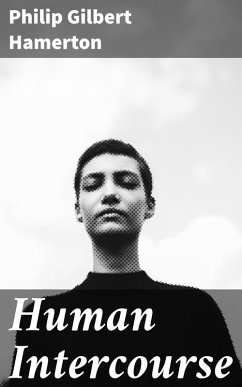In "Human Intercourse," Philip Gilbert Hamerton explores the intricate dimensions of human relationships through a blend of philosophical inquiry and autobiographical reflection. Written in the late 19th century, this work embodies a literary style that merges lyrical prose with rigorous analysis, allowing Hamerton to delve deeply into the nuances of social interactions. He engages with the cultural and psychological underpinnings of companionship, addressing themes such as intimacy, conflict, and the societal expectations that shape human behavior. As a product of its time, the book resonates with the burgeoning humanist concerns of the Victorian era, providing readers with a window into the evolving discourse on emotional and social connections. Hamerton, an accomplished artist, critic, and writer, often drew upon his personal experiences and insights in his works. His background in art and perceptive understanding of human behavior informed his examination of interpersonal dynamics in "Human Intercourse." Hamerton'Äôs travels throughout Europe and exposure to diverse cultures also contributed to his sophisticated comprehension of social mores, enriching the narrative's depth and relevance. I highly recommend "Human Intercourse" for those interested in the subtleties of human relationships and the philosophical reflections that accompany them. Hamerton'Äôs eloquent prose and thoughtful examination make this work both a pleasurable and intellectually stimulating read for anyone seeking to understand the complexities of social life.
Dieser Download kann aus rechtlichen Gründen nur mit Rechnungsadresse in A, B, BG, CY, CZ, D, DK, EW, E, FIN, F, GR, H, IRL, I, LT, L, LR, M, NL, PL, P, R, S, SLO, SK ausgeliefert werden.









